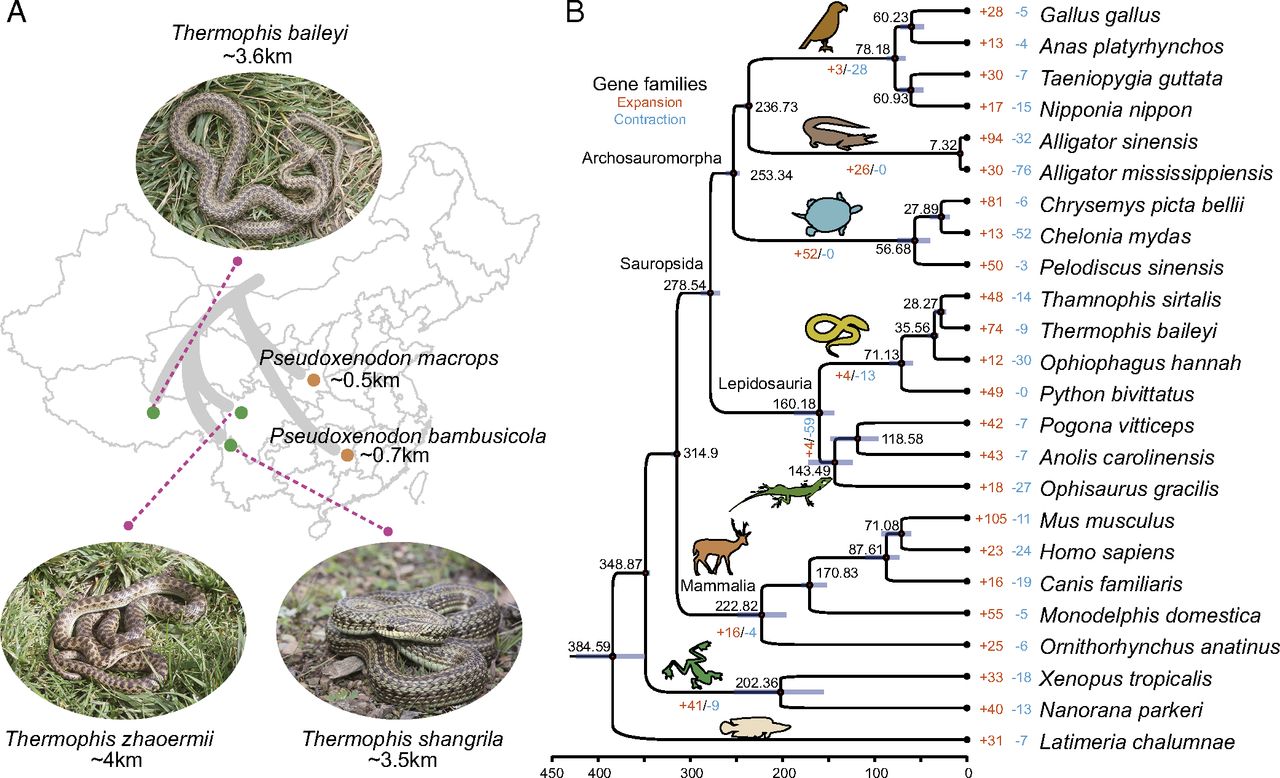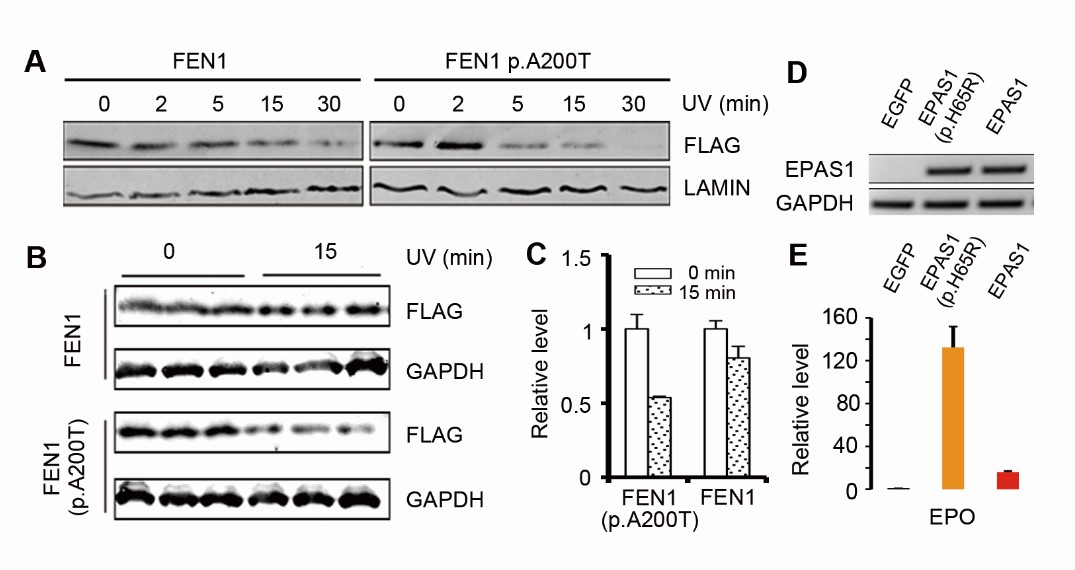| Chinese scientists reveal the world’s highest-altitude snake genome for the first time |
| 2018-12-29 | | 【Print】 |
The Qinghai-Tibet Plateau is the highest and largest alpine region in the world. High altitude, low growing season temperature, great intensity of solar radiation and other factors of the high-altitude environment on the plateau have been strong selective forces on the mechanism of speciation and population’s evolution. Therefore, the Qinghai-Tibet Plateau is known as a natural laboratory for studying the mechanisms of biological adaptation to plateau environment. Previous studies mainly focused on the adaptation of homothermic animals on the plateau, but the genetic mechanism of ectothermic animals’ adaption to the plateau environment still remains unknown.Studies founded that there were 27 substitution of common amino acid in 27 different proteins in the three species of Thermophis and these mutations were mainly associated with functions such as immunity, hypoxia adaptive response and DNA repair. Molecular function experiments confirmed that the mutation of FEN1 (petal endonuclease-1) gene related to DNA repair was more stable under ultraviolet irradiation than wild type (low-altitude species). It is speculated that the mutation contributes to the resistance of the Thermos species to ultraviolet light in high altitude environments. As a species of the plateau, mutation of the EPAS1 (endothelium PAS domain containing protein-1) gene of the hot-spring snake attenuate its ability to regulate the expression of downstream gene erythropoietin, leading to a lower hemoglobin concentration. That is an important reason for the hot-spring snake’s adaptation to high-altitude and low-oxygen conditions. In recent years, responding to the national policies, more people have been working on the plateau. Altitude sickness occurs frequently since the high altitude environment. Researches on the genetic mechanism of the adaptation on the extreme environment in plateau for homothermic animals and the ectothermic animals will play a substantial roles on the prevention and treatment of human high altitude disease. This study was conducted by teams of Prof. Li Jia-tang at (Chengdu Institute of Biology, Chinese Academy of Sciences) and Prof. Zhang Ya-ping at (Kunming Institute of Zoology, Chinese Academy of Sciences). Latest research results have been published on International Academic Journal PNAS entitled “A comparative genomic investigation of high-elevation adaptation in ectothermic snakes” on 10th July, 2018. The research has been funded by the Strategic Priority Research Program of the Chinese Academy of Sciences, Key Research Program of Frontier Sciences, the National Natural Science Foundation of China and Youth Innovation Promotion Association of CAS. Original link: http://www.pnas.org/content/pnas/115/33/8406.full.pdf
Chinese scientists reveal the world’s highest-altitude snake genome for the first time
Figure2. Molecular biological evidence of FEN1 and EPAS1
|




